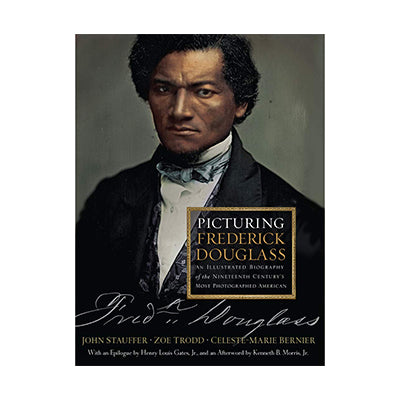Picturing Frederick Douglass is a work that promises to revolutionize our knowledge of race and photography in nineteenth-century America. Teeming with historical detail, it is filled with surprises, chief among them the fact that neither George Custer nor Walt Whitman, and not even Abraham Lincoln, was the most photographed American of that century. In fact, it was Frederick Douglass (18181895), the ex-slave turned leading abolitionist, eloquent orator, and seminal writer whose fiery speeches transformed him into one of the most renowned and popular agitators of his age. Now, as a result of the groundbreaking research of John Stauffer, Zoe Trodd, and Celeste-Marie Bernier, Douglass emerges as a leading pioneer in photography, both as a stately subject and as a prescient theorist who believed in the explosive social power of what was then just a nascent art form.
Indeed, Frederick Douglass was in love with photography. During the four years of Civil War, he wrote more extensively on the subject than any other American, even while recognizing that his audiences were "riveted" by the war and wanted a speech only on "this mighty struggle." He frequented photographers studios regularly and sat for his portrait whenever he could. To Douglass, photography was the great "democratic art" that would finally assert black humanity in place of the slave "thing" and at the same time counter the blackface minstrelsy caricatures that had come to define the public perception of what it meant to be black. As a result, his legacy is inseparable from his portrait gallery, which contains 160 separate photographs.
- 320 pages
- 9.4 x 1 x 12.4 inches
- written by John Stauffer, Zoe Trodd, and Celeste-Marie Bernier,
From February 11, 2022, Our Composite Nation: Frederick Douglass' America shines a light on the late 1860s—at a moment of great hope for the promise of equality under the law. The famed orator and once-enslaved abolitionist Frederick Douglass took his “Our Composite Nation” speech on the road to argue for a plural American democracy, especially calling out the need to include Chinese American immigrants. The mission of this new nation, he declared, was to provide the world “a composite, perfect illustration of the unity of the human family.” For what was the U.S., he said, but “the most conspicuous example of composite nationality in the world?” This special installation features artifacts, images, and a theatrical design that bring Douglass’ compelling speech to life and explores his vision of freedom, citizenship, and equal rights that remains urgently relevant today, as a hopeful plea for America to live up to its founding ideals.


